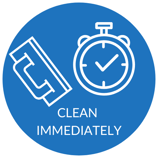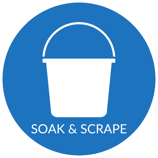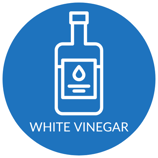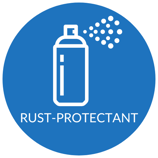To achieve the very best plastering finish, it’s all about keeping your tools clean. Plastering by hand or with an airless plastering machine requires you to finish the surface in the flattest and smoothest way possible using spatulas or floats. If your tools are caked with dried plaster you’ll struggle to glide over the surface and won’t be able to achieve that even, top-quality plastered wall. Here are our top tips for keeping your plastering tools super sparkling.

 First and foremost, we would suggest investing in high-quality tools as these will stand the test of time and withstand multiple cleaning. Cheaper tools can often look dull and tired very quickly as they are not built to endure frequent buffing, scrapping and scrubbing.. Whether it’s hawks, trowels, floats or spatulas, the best advice we can give you is to clean as soon as possible after plastering. Once plaster dries on and the longer it stays on, the more stubborn it is to remove. If you get delayed and can’t get to that crucial cleaning in time, here are our suggestions for how to get your tools back to clean and shiny.
First and foremost, we would suggest investing in high-quality tools as these will stand the test of time and withstand multiple cleaning. Cheaper tools can often look dull and tired very quickly as they are not built to endure frequent buffing, scrapping and scrubbing.. Whether it’s hawks, trowels, floats or spatulas, the best advice we can give you is to clean as soon as possible after plastering. Once plaster dries on and the longer it stays on, the more stubborn it is to remove. If you get delayed and can’t get to that crucial cleaning in time, here are our suggestions for how to get your tools back to clean and shiny.

Soak handheld metal tools overnight in water and baking soda. This will soften the plaster and you can then scrape it off with a putty knife or similar. If any stubborn layers remain you can continue to clean with a scouring pad.

Sanding your tools lightly with 400 grit sandpaper will bring back the shine on your metal.
 Rust can be a problem with metal tools and there are various solutions. The cheapest way to treat rust is to soak the tool in plenty of white vinegar overnight then scrub with coarse steel wool until the rust comes off. Rinse the tool thoroughly in clean water and then pat dry. This method of rust-removal takes time and effort and you can buy products that work much quicker such as WD-40 Rust Release Penetrant which can work in as little as 30 minutes. You can then follow up by buffing using a drill with a rust/paint stripper attachment.
Rust can be a problem with metal tools and there are various solutions. The cheapest way to treat rust is to soak the tool in plenty of white vinegar overnight then scrub with coarse steel wool until the rust comes off. Rinse the tool thoroughly in clean water and then pat dry. This method of rust-removal takes time and effort and you can buy products that work much quicker such as WD-40 Rust Release Penetrant which can work in as little as 30 minutes. You can then follow up by buffing using a drill with a rust/paint stripper attachment.
 Prevention is also better than cure and there are ways to rust-proof your tools to begin with. Using a rust protectant will extend the life of your tools and prevent corrosion. These products are applied to your tools by an aerosol spray enabling you to coat all sides lubricating the metal all over. Always pay close attention to small screws and bolts that are prone to rusting.
Prevention is also better than cure and there are ways to rust-proof your tools to begin with. Using a rust protectant will extend the life of your tools and prevent corrosion. These products are applied to your tools by an aerosol spray enabling you to coat all sides lubricating the metal all over. Always pay close attention to small screws and bolts that are prone to rusting.

When it comes to storing your tools, ensure you dry them thoroughly once clean and place in a moisture-free area. As the majority of your tools will be metal, exposure to moisture causes rust which affects the quality of your tool.
